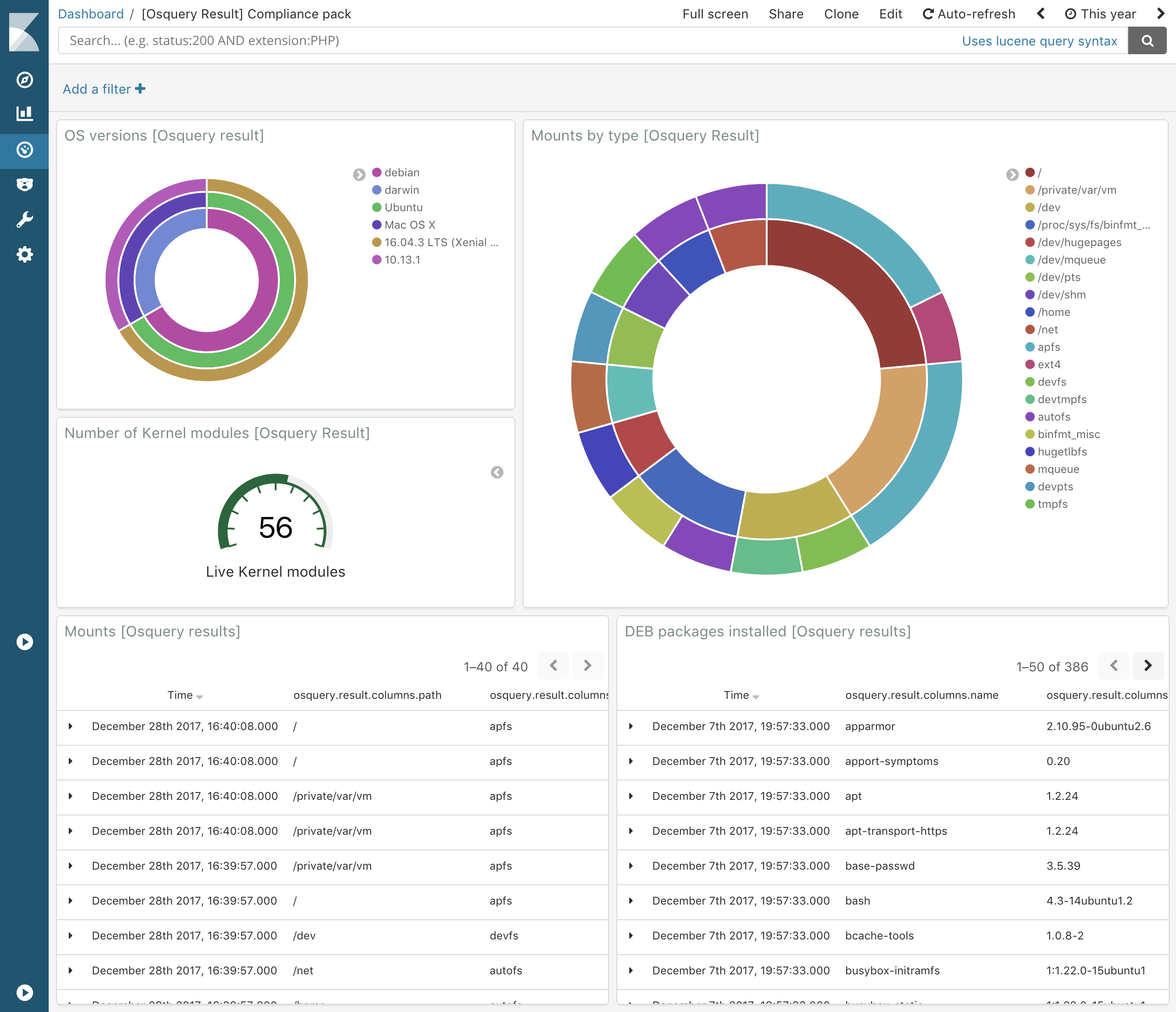

- Osquery rpi install#
- Osquery rpi update#
- Osquery rpi pro#
- Osquery rpi software#
- Osquery rpi download#
Next I outputted the raspberry Pi cli history to a file and sent it to my iPhone where I edited this blog post with the WordPress app. tailscale statusįind the ip of the server or device from the status list and connect. Using the Tailscale cli to list all devices on my private network I found the IP. Now to test the new secure Tailscale mesh VPN set up I wanted to login to my MunkiReport web server. But this time I wanted to try a pregenerated keys from the Tailscale admin panel. The next step is to authorize Tailscale which is usually done with a login to our account we created the Tailscale network with.

Osquery rpi install#
Check with apt for updates then we can finally install Tailscale. curl -fsSL | sudo apt-key add -Ĭurl -fsSL | sudo tee /etc/apt//tailscale.list
Osquery rpi download#
Note: Always be mindful when using curl to download and install items or scripts. Similar to my adventures with CentOS Linux and yum you have to tell Raspbian Linux what to do with apt.įirst we fetch the signing key and tell it where the repo is. Before installing Tailscale we have to install other needed components and we have to tell Linux where to find the software. Read the instructions for Raspberry Pi on the Tailscale website. Then it is just a matter of upgrading everything. A few months in a box and there should be a lot of updates.
Osquery rpi software#
This was my first step the gui app didn’t list any software that had updates. Using apt you can get a list of what is upgradeable.
Osquery rpi update#
I didn’t have much luck with the add / remove software gui app (maybe because it was still getting on wifi) but after getting on the network I fired up apt to update all the things. So far I’ve linked up macOS, iOS, windows, Linux centos as well as Synology and QNAP NAS so now let’s add a raspberry Pi.įirst things first let’s update the raspberry Pi because it’s been sitting in its box for a while. Tailscale is a mesh VPN and allows you to link up all your devices in a private network no matter where they are. What to do next? Install Tailscale of course !! Once you plug in power, the mouse and an HDMI monitor you have a working Linux computer running Raspbian. It’s an all in one unit that fits into a keyboard. This is an incredible form factor for the raspberry Pi. I was excited all the same because it was a Raspberry Pi 400. I finally got a chance to open up my Christmas present to myself a few months late. Posted in Archiving, Backups, Security, Server, Storage, Tricks And Tips | Tagged DSM, NAS, synology, vpn, wireguard | 3 Replies Raspberry Pi for Christmas This post is just a quick overview of using Tailscale to set up your P5 clients (which is your Synology NAS in this case). Add your P5 clients to your P5 server via Tailscale and you’ve got a secure setup. With Synology NAS package center it’s a simple one-click install for P5. I use P5 with my clients to backup their shared storage to LTO and it makes sense to backup all the things no matter where they are with P5 also. Using Archiware P5 to Backup and Sync your NAS is a good thing if you’re already using Archiware P5 to backup and sync all the other things, then at least you have only one dashboard to look at.
Osquery rpi pro#
Pro tip: only allow remote access to a restricted and time limited account so you don’t leave it on accidentally. This only has to be done once but future updates may require fixes. Step 2: Set up Outgoing VPN access via Tailscale which requires editing some files (which necessitate Terminal and remote login access). It honestly used to be harder than this, these days you can simply add the Tailscale package via the Synology package center app and you’re done. How cool is that? In today’s advanced lesson: you can backup and sync your Synology NAS using Archiware P5. Suddenly your iPhone can securely send files to your Mac or raspberry Pi across the world. Tailscale is a mesh-VPN which uses WireGuard to securely establish a mesh (point to point) VPN of your devices. What if we could avoid that and not open (or forward) any port to make services work across the internet? So then your firewall is tested, and then auto-ban and geo-block and emails go out. Well, wouldn’t you know it, if ssh is port 22 or web traffic is on port 80 then everyone and their port scanner comes knocking. On your router the traffic for a server or service went to a port (where a number represents a service, some which are defined, but can be arbitrary) and to a destination IP address. In the old days we used to forward ports. Use Tailscale Mesh-VPN with P5 Backup and Sync


 0 kommentar(er)
0 kommentar(er)
